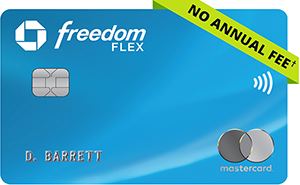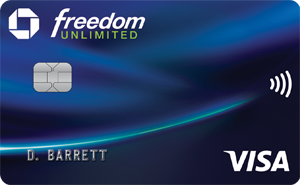When you have credit card debt, a balance transfer with Chase can help you pay it back more quickly and with less interest. Credit card interest rates are one of the biggest obstacles to paying off debt. A balance transfer lets you refinance your existing credit card debt at a 0% APR for an introductory period.
In this Chase balance transfer guide, we'll go over how to set up balance transfers with this card issuer, the rules, and everything else you need to know.
How to do a balance transfer with Chase
To do a balance transfer with Chase online, follow these steps:
- Log in to your Chase account and go to the credit cards section.
- Select your Chase balance transfer card.
- Select "More," and on the dropdown menu that appears, choose "Account services" and then "Transfer a balance."
- Select the balance transfer offer and click "Next."
- Fill out the balance transfer form. You'll need the credit card number of the card with the balance you want to transfer and the transfer amount.
The balance transfer should process in a week to 21 days. Continue making any required payments on the original credit card account until the balance transfer is complete.
Another way to do a balance transfer with Chase is by calling the card issuer. The phone number is available on the back of your Chase credit card.
LEARN MORE: A Complete Guide to Balance Transfers
Don't you wish you could take a peek inside a credit card expert's wallet sometimes? Just to see the cards they carry? Well, you can't look in anybody's wallet, but you can check out our experts' favorite credit cards. Get started here:
What to know before doing a balance transfer with Chase
There are a few things to keep in mind regarding Chase balance transfers.
- Like most credit card companies, Chase charges a balance transfer fee. The standard Chase balance transfer fee is 5% with a $5 minimum. Its best balance transfer cards also offer an intro balance transfer fee of 3% with a $5 minimum on transfers made within 60 days of account opening.
- The total amount you transfer, plus the transfer fee, can't exceed your available credit or $15,000, whichever is lower.
- You can't use a balance transfer with Chase to pay off any other Chase accounts. That includes balances from other Chase credit cards and loans.
- You must have a balance transfer offer on your Chase credit card. Chase doesn't let you transfer a balance without one.
Benefits of a balance transfer
The main reason for a balance transfer is to get a lower interest rate on your credit card debt. With the best balance transfer cards, you can get a 0% introductory APR on balances you transfer. The introductory period will give you time to pay down your debt without incurring more interest charges. When you're not paying interest, that also means you can pay off your debt more quickly.
Another perk of a balance transfer is that you can consolidate debt. If you have balances on multiple credit cards, you can transfer them all to one card. You'll then only have to make one monthly payment.
Chase cards with a 0% intro APR on balance transfers
Not all Chase cards offer a 0% intro APR for balance transfers. Here are the current Chase credit cards that have this benefit.

|

|
| Chase Freedom Flex℠ | Chase Freedom Unlimited® |
|
Rating image, 5.00 out of 5 stars.
5.00/5
Our ratings are based on a 5 star scale.
5 stars equals Best.
4 stars equals Excellent.
3 stars equals Good.
2 stars equals Fair.
1 star equals Poor.
We want your money to work harder for you. Which is why our ratings are biased toward offers that deliver versatility while cutting out-of-pocket costs.
|
Rating image, 5.00 out of 5 stars.
5.00/5
Our ratings are based on a 5 star scale.
5 stars equals Best.
4 stars equals Excellent.
3 stars equals Good.
2 stars equals Fair.
1 star equals Poor.
We want your money to work harder for you. Which is why our ratings are biased toward offers that deliver versatility while cutting out-of-pocket costs.
|
|
Apply Now for Chase Freedom Flex℠
On Chase's Secure Website. |
Apply Now for Chase Freedom Unlimited®
On Chase's Secure Website. |
|
Credit Rating Requirement:
Falling within this credit range does not guarantee approval by the issuer. An application must be submitted to the issuer for a potential approval decision. There are different types of credit scores and creditors use a variety of credit scores to make lending decisions.
Recommended Credit Score required for this offer is: Good/Excellent (670-850)
Good/Excellent (670-850) |
Credit Rating Requirement:
Falling within this credit range does not guarantee approval by the issuer. An application must be submitted to the issuer for a potential approval decision. There are different types of credit scores and creditors use a variety of credit scores to make lending decisions.
Recommended Credit Score required for this offer is: Good/Excellent (670-850)
Good/Excellent (670-850) |
|
Welcome Offer: Earn a $200 Bonus after you spend $500 on purchases in your first 3 months from account opening! $200 bonus |
Welcome Offer: Earn an extra 1.5% on everything you buy (on up to $20,000 spent in the first year) — worth up to $300 cash back. That's 6.5% on travel purchased through Chase Travel, 4.5% on dining and drugstores, and 3% on all other purchases. Up to $300 cash back |
|
Rewards Program: 5% cash back on up to $1,500 in combined purchases in bonus categories each quarter you activate. Enjoy new 5% categories each quarter! Plus, earn 5% cash back on travel purchased through Chase Ultimate Rewards®, 3% on dining and drugstores, and 1% on all other purchases. 5% cash back offer |
Rewards Program: Enjoy 5% cash back on travel purchased through Chase Travel, our premier rewards program that lets you redeem rewards for cash back, travel, gift cards and more; 3% cash back on drugstore purchases and dining at restaurants, including takeout and eligible delivery service, and 1.5% on all other purchases 1.5% - 5% cash back |
|
Intro APR: 0% Intro APR on Purchases Purchases: 0% Intro APR on Purchases, 15 months Balance Transfers: 0% Intro APR on Balance Transfers, 15 months |
Intro APR: 0% Intro APR on Purchases and Balance Transfers for 15 months Purchases: 0% Intro APR on Purchases, 15 months Balance Transfers: 0% Intro APR on Balance Transfers, 15 months |
|
Regular APR: 20.49%-29.24% Variable |
Regular APR: 20.49% - 29.24% Variable |
|
Annual Fee: N/A $0 |
Annual Fee: N/A $0 |
|
Highlights:
|
Highlights:
|
|
Apply Now for Chase Freedom Flex℠
On Chase's Secure Website. |
Apply Now for Chase Freedom Unlimited®
On Chase's Secure Website. |
Show More
 Show Less
Show Less
|
|
Making the most of a balance transfer with Chase
A balance transfer with Chase isn't a one-stop solution to credit card debt. You still need to be diligent in paying the balance down so you don't waste the opportunity. After the introductory APR ends on a balance transfer credit card, it reverts to the variable APR. That means you'll start paying more interest on any remaining credit card balance.
But a balance transfer can certainly make a big difference in how quickly you get out of debt and how much interest you pay on your credit cards. If you pay as much as you can toward your debt, a balance transfer offer gives you plenty of time to reduce or even erase what you owe.
Still have questions?
Some other questions we've answered:
FAQs
-
Chase allows balance transfers with some of its credit cards. The best option is to get a Chase card with a 0% intro APR on balance transfers, as this can save you money on interest while you pay off debt.
-
Chase's standard balance transfer fee is 5% of the amount transferred with a $5 minimum. Some Chase cards also have an intro balance transfer fee of 3% with a $5 minimum.
-
Balance transfers usually don't hurt your credit, and they can often have a positive impact on your credit score. When you open a balance transfer card, it increases your total credit. This can lower your credit utilization ratio, a significant factor in your credit score. If you use a balance transfer offer to pay down your credit card debt, that can also cause your credit score to go up.
Our Credit Cards Experts
We're firm believers in the Golden Rule, which is why editorial opinions are ours alone and have not been previously reviewed, approved, or endorsed by included advertisers. The Ascent does not cover all offers on the market. Editorial content from The Ascent is separate from The Motley Fool editorial content and is created by a different analyst team.